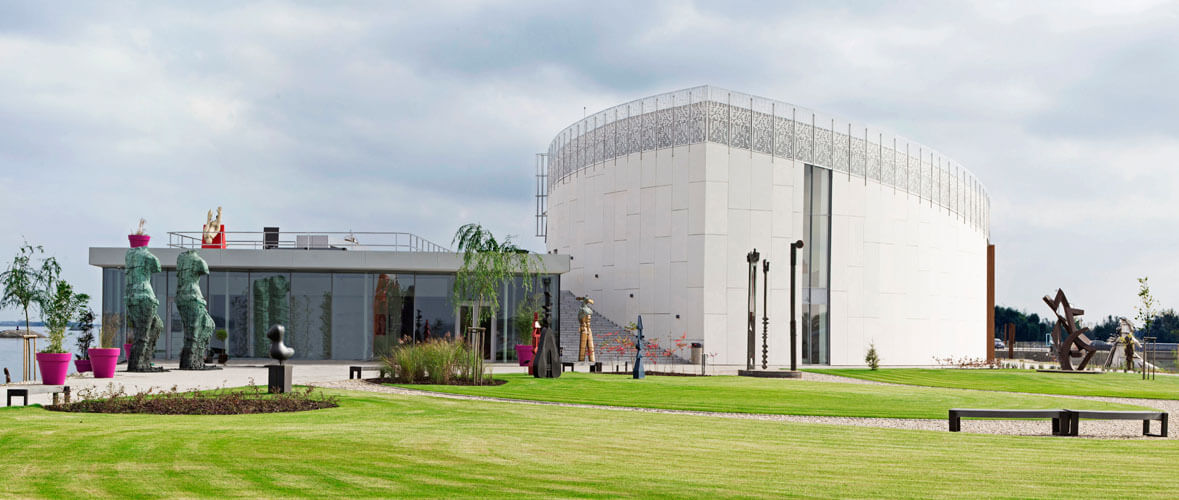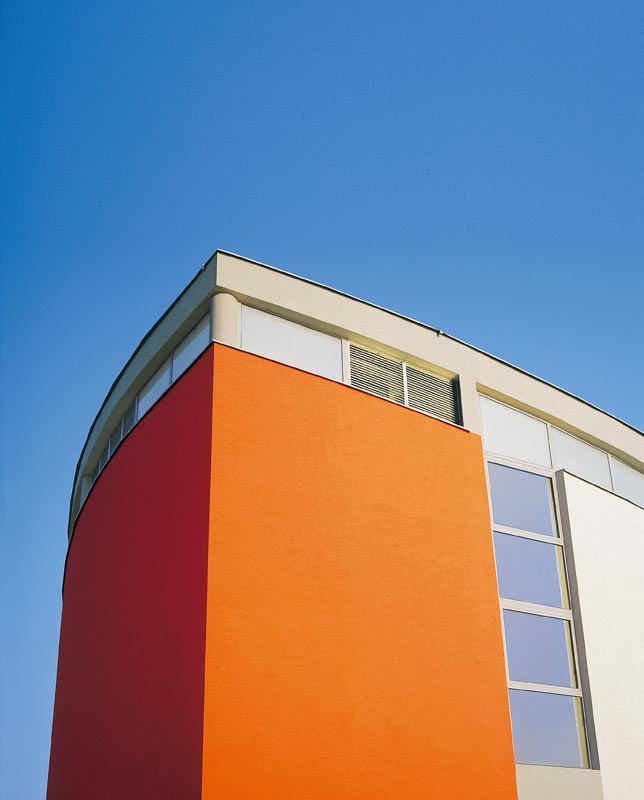
Architecture
Many years ago, Vincent Polakovič, the gallerist, presented architect Peter Žalman with the idea of designing the museum in the shape of a ship (a Roman galley with wooden oars). And like Gerard Meulensteen and others who were consulted regarding the shape and setting in the natural Danube/Čuňovo Dam environment, he “got on board.” The peninsula, which seemed to be left behind by the dam builders, was begging to be used for this purpose in 1998. When the Via Danubia acquired it in a long-term lease in 1999, Gerard Meulensteen decided to build the museum there. From 2000 to 2013, the exhibitions were installed in the spaces designed and built for this purpose. However, since the general public expected a variety of exhibitions (they were changed on a quarterly basis), the museum founders decided to expand the building in order to create a space for the Danubiana’s permanent collection.
In 2008, Gerard Meulensteen organized an international symposium of young architects from Slovakia and the Netherlands which led to the competition for the future shape of the museum extension. The design of Ing. Arch. Ján Kukuľa, who had recently returned to Slovakia after an extended stay in Ireland, was chosen and he was appointed as chief architect. His concept, in which the new spaces were linearly arranged along the Danube River bank while preserving the proportions and dominant character of the original museum structure, was accepted as the best solution. When Gerard Meulensteen decided to donate the museum to Slovakia, the Slovak Government provided funds for the museum extension. Construction began in the spring of 2013 and was completed in September 2014. In the same year, an international panel selected it as the “ 2014 Construction of the Year” in the Slovak Republic.
The Danubiana has become a Bratislava landmark and its setting on the peninsula running into the broad and majestic Danube River is the result of the professional approach of everyone who was present at its birth.



















